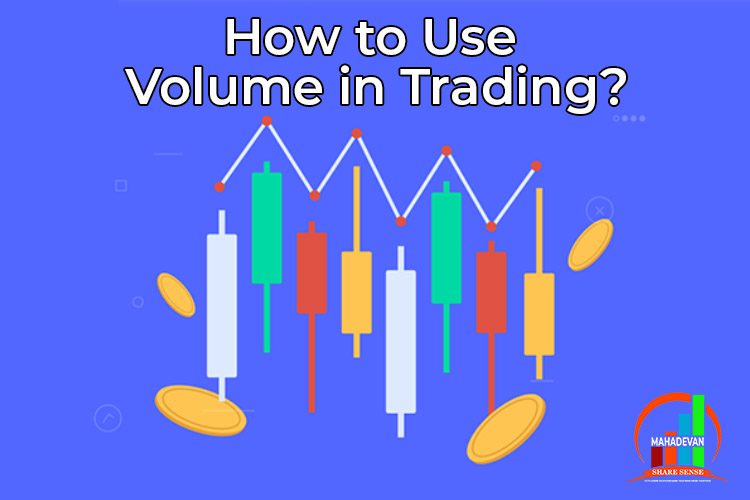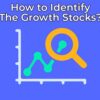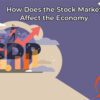

In the stock market, technical analysts use past trading data to predict the future price movements of a stock. Volume is a well-known metric that is used in the technical analysis of stocks. Seasonal traders are aware of how to use volume in trading.
Definition of Volume in Stock Market
In the stock market, Volume stands for the total quantity of the shares that are traded for any security. The average volume indicator helps in indicating the average volumes in a stock over a specific period. As of May 2021, the 1-month trading volume of Reliance stock was 78 lakh shares. Keep reading to learn how to use volume in trading.
High and Low Volume Significance
In a stock, high volumes indicate that the investors have a high interest in buying or selling a stock. Low volumes indicate a lack of liquidity and show that only a small number of investors or traders are interested in the stock.
What is the Relation Between Volume and Price in the Stock Market?
Analyzing price and volume will help in understanding bullish and bearish signs in the market. For example, if the prices are falling at high volumes, it is an indication that bear sentiment is becoming stronger. Also, if the prices are increasing at high volumes, it shows that the bull sentiment is becoming stronger. Even though they are related, their movements are not always dictated by the other.
Use of Volumes to Spot Momentum
Momentum helps in identifying a trend and shows the rate at which the price of a stock is changing over time. If the stock prices are rising, it indicates bullish momentum. On the other hand, if the stock prices are falling, it indicates bearish momentum. A volume vs price analysis can also help in spotting momentum.
Must Read- How to Select the Winning Penny Stocks
When the price of the stock increases at low volumes, it shows that the bullish trend is losing its momentum and indicates a likely reversal of a trend. MACD or Moving Average Convergence Divergence is a useful indicator of momentum. It helps the traders identify when the bearish or bullish indicator is high to help them plan their entry or exit accordingly.
Common Volume Indicators
The 3 most commonly used volume indicators are shown below:
- OBV or On Balance Volume
OBV or On Balance Volume is a simple indicator that makes use of changes in volumes to predict the stock prices. As per OBV, there is a correlation between Volume and Price. The overall direction of the OBV helps the traders understand the momentum. E.g. If the On Balance Volume is rising, it is a sign of a bullish trend.
- CMF or Chaikin Money Flow
CMF or Chaikin Money Flow was invented by a famous trader Marc Chaikin. CMF is used in measuring whether selling or buying pressure is dominating the stock market. As per Chaikin, if the closing price of a stock is close to its high, it is an indicator of buying or accumulating pressure. If the closing price is close to its low price, it is an indicator of selling pressure.
- Klinger Oscillator
Klinger Oscillator compares the volume with price, converts the result of the comparison into an oscillator, and helps in the prediction of price reversals. The oscillator helps in identifying the long-term money flow trends for specific securities. The Klinger Oscillator is much more complex than the OBV indicator.
Points to Remember
- In the stock market, Volume can be a useful tool to understand the trends in stock prices.
- Traders and investors use volumes to spot the bullish or bearish momentum in stocks.
- On Balance Volume, Chaikin Money Flow and Klinger Oscillator have commonly used volume indicators.
- A volume vs price analysis is a good way of understanding the trends rather than looking at price or volume alone.
Frequently Asked Questions – How to Use Volume in Trading?
- What is a Trading Volume Chart?
A Trading Volume Chart depicts the trading volumes of stock. It is a bar chart with volume bars of 3 colors. The volume bars show the drop or rise in volumes, and the colors indicate whether the stock closed lower or higher than or at the same price as the previous day.
- What is the Net Volume Indicator?
Net Volume can be calculated by subtracting an uptick volume (the number of shares that are traded when the price is increasing) of a stock from its downtick volume (the number of shares traded when the price is decreasing). The net volume is calculated over a specific period. If the net volume is negative, it indicates a bearish trend and if it’s positive, it indicates a bullish trend.
- What is a Good Average Volume in Stock?
The average volume of stock varies by individual stock. You can check the average volume of stock over different periods, such as 3 months, 6 months, etc. This analysis will help you understand the good average volume of a particular stock.
Summing Up
Day traders and technical analysts should know how to use volume in trading for their day-to-day activities. Volume indicators can be used in combination with fundamental analysis tools and other technical indicators. Volume indicators will give you trends based on past data. Keep in mind that past performance cannot be relied upon for predicting future prices.














